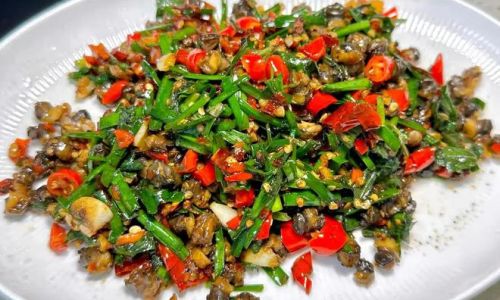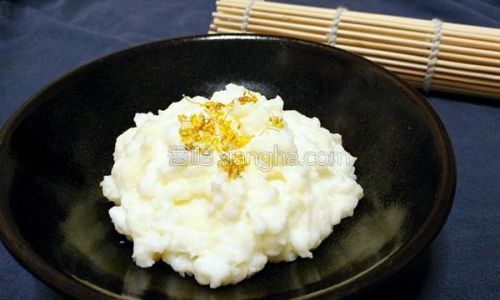Table of content
Stir-fried snail meat, or baochao luosi rou in Mandarin, is a dish that tantalizes the taste buds and embodies the boldness of Chinese cuisine. Rooted in centuries of culinary tradition, this dish transforms humble river snails into a symphony of textures and flavors—crispy, tender, spicy, and savory all at once. Often found in bustling night markets, family kitchens, and high-end restaurants alike, stir-fried snail meat is more than just a meal; it’s a cultural icon. This article delves into the history, preparation, and cultural significance of this beloved dish, exploring why it continues to captivate food enthusiasts worldwide.
A Historical Tapestry: Snails in Chinese Gastronomy
The consumption of snails in China dates back over 2,000 years, with early records appearing in agricultural texts and poetry. Ancient Chinese philosophers and scholars often praised snails as a humble yet nourishing food source, particularly during times of scarcity. Over time, snails evolved from a peasant staple to a gourmet delicacy, especially in regions like Jiangxi, Hunan, and Sichuan, where spicy stir-fries became a hallmark of local cuisine.
Stir-frying, a cooking technique perfected during the Song Dynasty (960–1279 CE), provided the ideal method to elevate snail meat. The high heat and quick cooking preserved the snails’ delicate texture while infusing them with aromatic spices. Today, this dish is celebrated during festivals, family reunions, and late-night gatherings, symbolizing camaraderie and the joy of shared meals.

The Anatomy of Flavor: Key Ingredients
Creating the perfect stir-fried snail meat requires a careful balance of ingredients. Each component plays a pivotal role in building layers of umami, heat, and fragrance:
- Snail Meat: Freshwater snails, typically Bellamya aeruginosa or Viviparus species, are prized for their firm yet tender flesh. The snails are purged of grit by soaking them in clean water for hours, ensuring a clean, sand-free bite.
- Aromatics: Garlic, ginger, and scallions form the flavor base. Garlic, sliced or minced, adds a pungent kick, while ginger imparts a subtle warmth.
- Chili Peppers: Dried red chilies or fresh bird’s-eye chilies contribute fiery heat, a defining trait of dishes from Sichuan and Hunan.
- Fermented Bean Paste: Doubanjiang, a fermented broad bean and chili paste, adds depth and a salty-spicy complexity.
- Soy Sauce and Oyster Sauce: These sauces provide umami and a glossy finish, binding the ingredients together.
- Sichuan Peppercorns: Optional but iconic, these peppercorns deliver a numbing sensation that contrasts beautifully with the heat.
- Herbs and Garnishes: Fresh cilantro or basil leaves, added at the end, offer a bright, herbal freshness.
The Alchemy of Preparation: From Snail to Stir-Fry
The journey from riverbed to plate is meticulous, requiring patience and precision. Here’s a step-by-step breakdown of the process:
Cleaning and Purging the Snails
- Soaking: Fresh snails are submerged in water for 6–12 hours, allowing them to expel mud and debris. Some cooks add a pinch of salt or chili flakes to accelerate the process.
- Trimming: The snails’ shells are scrubbed clean, and the operculum (the hard “trapdoor” covering the shell opening) is removed. The meat is either extracted entirely or left partially attached to the shell for presentation.
Blanching the Snails
Blanching in boiling water with ginger and rice wine eliminates any remaining impurities and firms up the meat. This step is crucial for achieving a crisp texture.
Preparing the Aromatics
Garlic, ginger, and scallions are finely chopped or sliced. The proportion of each can be adjusted to suit personal taste—more garlic for pungency, more ginger for warmth.
The Stir-Fry: Fire and Speed
- Heating the Wok: A well-seasoned carbon steel wok is heated until smoking hot. A small amount of oil (peanut or vegetable) is added, followed by the aromatics.
- Searing the Snails: The blanched snail meat is tossed into the wok, stirred vigorously to ensure even cooking. High heat sears the meat, locking in moisture.
- Adding Flavor: Fermented bean paste, soy sauce, and oyster sauce are stirred in, coating the snails in a rich, glossy sauce. Chilies and Sichuan peppercorns are added last to preserve their vibrancy.
- Finishing Touch: A splash of rice wine or Shaoxing wine deglazes the wok, lifting any caramelized bits. The dish is garnished with cilantro and served immediately.
Regional Variations: A Tapestry of Tastes
China’s vast culinary landscape has given rise to countless regional interpretations of stir-fried snail meat:

- Sichuan Style: Emphasizes mala (numbing-spicy) flavors, with generous amounts of dried chilies and Sichuan peppercorns.
- Cantonese Style: A milder version with ginger, scallions, and a touch of oyster sauce, often served with vermicelli noodles.
- Jiangxi Style: Incorporates fermented rice wine and pickled chili peppers for a tangy-spicy kick.
- Thai-Inspired Twist: Some modern chefs add lemongrass, basil, and fish sauce, reflecting Southeast Asia’s culinary influence.
Health and Nutrition: A Surprising Powerhouse
Snail meat is surprisingly nutritious, offering a lean source of protein, iron, and vitamin B12. It’s also low in fat and calories, making it a healthier alternative to red meat. Traditional Chinese medicine praises snails for their ability to clear heat and detoxify the body, though these claims are anecdotal. Modern nutritionists note their selenium content, an antioxidant that supports immune function.
The Cultural Impact: From Street Food to Fine Dining
Stir-fried snail meat’s popularity transcends social classes. In bustling cities like Chengdu and Guangzhou, street vendors sell it by the plate, piled high with chili-studded snails and toothpicks for easy eating. Meanwhile, Michelin-starred restaurants reinterpret the dish with foams, gels, and molecular gastronomy techniques, proving its versatility.
The dish has also inspired culinary festivals, such as the annual Luosi Festival in Nanchang, Jiangxi, where chefs compete to create the most innovative snail dishes. Social media platforms like Douyin (China’s TikTok) further amplify its reach, with food bloggers sharing recipes and eating challenges.
Challenges and Controversies
Despite its cultural significance, stir-fried snail meat faces modern challenges. Overharvesting and pollution threaten wild snail populations, prompting some regions to promote aquaculture. Additionally, food safety concerns arise if snails are not purged properly, risking parasitic infections. Regulatory bodies now enforce strict guidelines for snail farming and preparation.
The Global Appeal: A Dish Beyond Borders
In recent years, stir-fried snail meat has gained international acclaim, appearing on menus in New York, London, and Paris. Food critics praise its “addictive” balance of heat and texture, while home cooks experiment with substitutions (e.g., escargot for a Western twist). Online communities like Reddit’s r/ChineseFood and YouTube tutorials have democratized the recipe, allowing enthusiasts worldwide to recreate the dish.

Conclusion: A Bite of Tradition and Innovation
Stir-fried snail meat is more than a dish—it’s a testament to China’s culinary ingenuity. From its humble origins as a peasant food to its status as a global sensation, it embodies the interplay of tradition and modernity. Whether enjoyed with a cold beer at a night market or paired with a boutique wine at a fusion restaurant, this dish continues to inspire awe and appetite in equal measure. As chefs and home cooks alike push the boundaries of flavor, one thing remains certain: the humble snail’s journey from river to wok is far from over.
Word Count: 1,523





0 comments